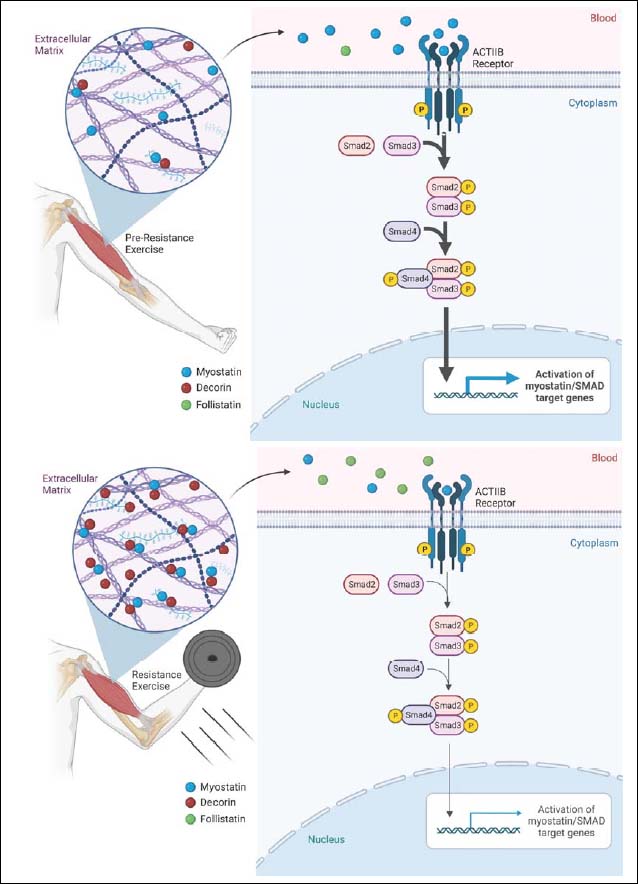Figure 1. RE-induced up-regulation in myostatin and subsequent increases in decorin bind myostatin in the ECM and reduce Smad 2/3 activity. A hypothetical mechanism of action based on our findings: Based on our results, compared to pre-RE, RE increased myostatin mRNA and protein expression. In addition, muscle decorin was increased which conceivably resulted in more robust binding to myostatin in the ECM which resulted in less myostatin entering the circulation. This decrease, along with a RE-induced increase in circulating follistatin likely resulted in less myostatin binding to the ACTIIB receptor with less subsequent impact on Smad 2/3 signaling.
